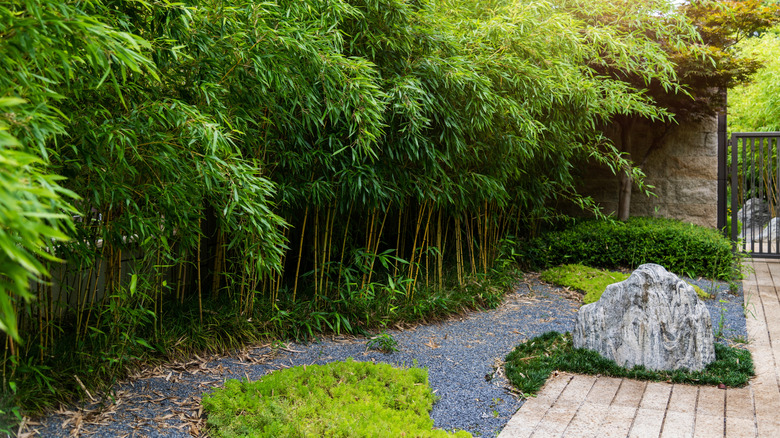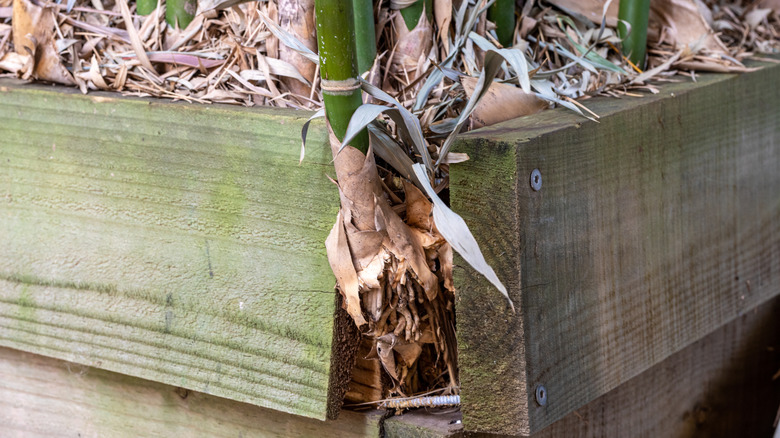The Potential Home Risk That Comes With Planting Bamboo In Your Yard
Bamboo continues to be a fascinating plant for many people. Not only does it have a unique visual appeal, but it also has a reputation for growing very quickly. Some people appreciate bamboo for its ornamental value, while others might try to plant it as a natural screen or barrier to create some privacy in outdoor spaces. Before you plant bamboo in your own yard though, it's important to be aware of the potentially expensive consequences of doing so. Not only can bamboo quickly overtake your yard, but it's also known to cause some serious damage to homes, too.
While commonly mistaken for thin trees thanks to its woody stems, bamboo is actually a perennial grass. It's also considered among the fastest-growing types of plants in the world, with some cultivars growing over 3 feet per day. The two types of bamboo you're most likely to see in the U.S. are classified as either clumping or running bamboo.
As the name suggests, invasive running bamboo types can spread laterally thanks to runners along the ground. Rather than simply spreading on top of the ground though, running bamboo produces new roots and stems along the way. This can cause the plant to grow and spread rapidly in a yard or garden by as much as 5 feet per year, and can spell danger if it gets close to structures such as homes. For these reasons, experts advise that you never plant running bamboo on your property. Clumping bamboo, on the other hand, is considered non-invasive and spreads slowly at a rate of one inch annually, but it may still cause problems if it's left unchecked.
How planting bamboo in your yard could damage your home
Unless bamboo stems are strategically destroyed so that they stop producing new ones, running bamboo will continue to grow and spread at a quick rate indefinitely. In fact, without any underground obstruction, bamboo can spread over 100 feet! With this in mind, it's easy to see how bamboo can grow underground and make its way to your home without anyone noticing until potential damage has been done. Bamboo can cause breaks through multiple areas of your home, including the foundation, siding, plumbing, and even your roof. It can also damage other parts of your property, such as driveways, decks, and pools. The situation may be dire if you grow these plants right next to your house. There's also damage beyond your own home to consider. When left unchecked, running bamboo can crowd out native plants and even spread into neighboring properties.
If you have already planted running bamboo in your yard, you can save yourself a lot of money and trouble by removing it sooner rather than later. You could also look into how to get rid of bamboo if it takes over your garden. This task is arguably best accomplished by professionals who can employ a combination of physical and herbicidal controls as needed. They will also be able to dispose of the bamboo for you, so you don't have to deal with the hassle of trying to figure out where you can legally discard it. Once you've removed bamboo from your property, you will need to stay vigilant by checking for new signs of growth on a regular basis.

